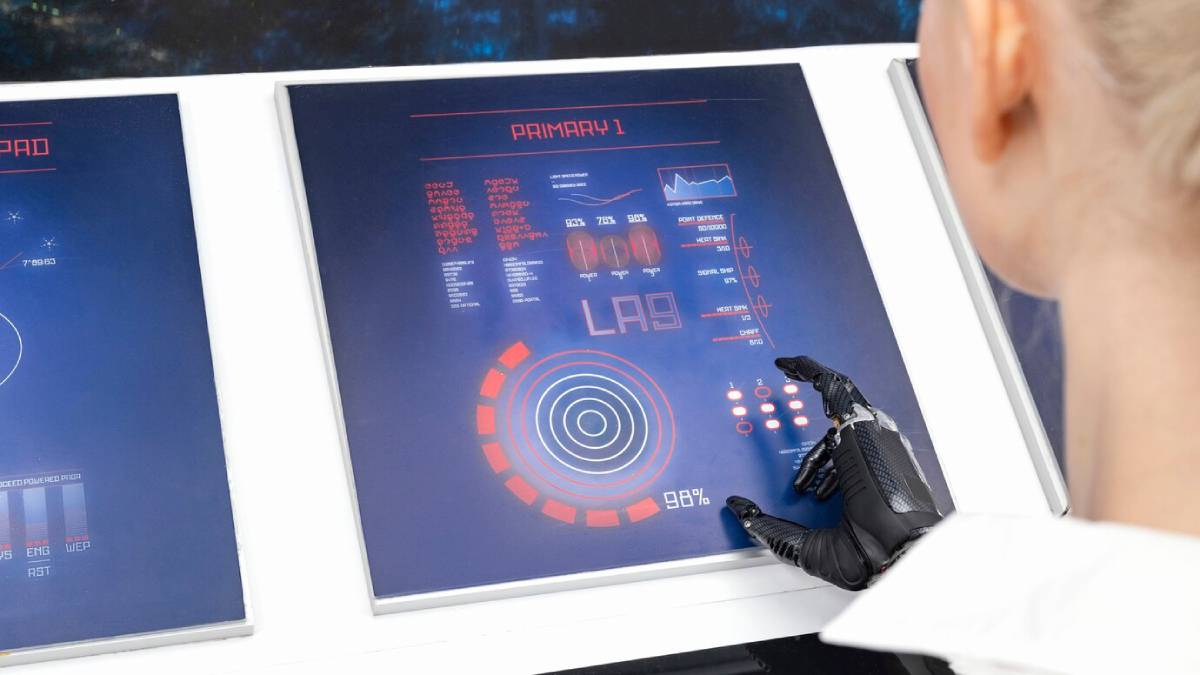
Personalised Difficulty in FPS via Machine Learning
Step into the virtual battlefield of your favourite FPS game. Every challenge is made just for you. Imagine a game that changes based on your skills. Every challenge feels exciting and rewarding. This isn’t just a dream; it’s the future of gaming, powered by the magic of machine learning. This blog explores how AI-driven personalised difficulty is changing FPS games. It’s making them more engaging and accessible for players, no matter their skill level. Whether you’re a pro or just starting, you’ll see how this tech will change your gaming experience.
Key Benefits of Personalised Difficulty in FPS Games
Why It Matters
The gaming industry is constantly changing. Developers work hard to create more immersive and fun experiences. Personalised difficulty, driven by machine learning, is a game-changer. But why does it matter? Let’s explore the key benefits:
- Increased Player Involvement: Regular games like Easy, Normal, and Hard have difficulty levels. These levels show some differences, but they often miss the mark. They may not reflect a player’s skill or growth. Players might outgrow the “normal” difficulty quickly. This can cause boredom or frustration.
- Enhanced Skill Development: Games with personalised difficulty settings offer targeted challenges. They match the player’s abilities instead of just adding obstacles. For example, a player might be great at reflex-based combat. You’ll feel a sense of growth and progress that is both enjoyable and satisfying.
- Easier Access: Traditional difficulty settings often focus on just a few player skills. What if you’re a player who enjoys FPS games but struggles with fast-paced action or precision aiming? Or perhaps you’re a veteran player who finds conventional settings too simplistic. Personalised difficulty levels make FPS games more accessible to a broader audience.
- Less Frustration: Staying on a level you can’t beat is tough. It’s even worse when the difficulty seems random and beyond your control. Personalised difficulty helps avoid this by ensuring that challenges remain manageable. Players can work through obstacles at their speed.
Real-Life Applications
Imagine a player who keeps having a hard time with a specific enemy in an FPS game. Traditional games can make players repeat levels until they win. This can be frustrating. With personalised difficulty, the AI can change the enemy’s behaviour. It might make them less aggressive or add temporary power-ups to help the player. This allows players to move ahead without feeling “carried.” It also keeps the challenge significant.
Additional Expert Tips & Common Mistakes to Avoid
Best Practices for Implementing AI in FPS Games
Implementing AI-driven personalised difficulty in FPS games requires careful consideration. Here are some best practices to keep in mind:

- Data Collection and Analysis: Games need to gather and analyse player data. This helps to tailor difficulty levels effectively. Track player actions, successes, and failures. This allows us understand their skill level and preferences. Machine learning algorithms require this data to build accurate models of player behaviour. This helps make real-time adjustments. The more data the AI collects, the better it can customise the experience. This way, each change feels meaningful.
- Balancing Difficulty: Striking the right balance between challenge and fairness is crucial. Too aggressive AI changes can frustrate players, while weak adjustments might make them bored. Developers need to adjust the AI so that the difficulty curve stays smooth and gradual, not sudden or jarring. This requires regular testing and player feedback. We will adjust AI responses based on skill and experience levels.
- Transparency: Players should know how the AI adjusts the game’s difficulty. Hiding adaptive mechanics is simple. However, offering feedback or options to adjust difficulty can enhance the player’s experience. For example, players can choose how aggressive the AI is in scaling challenges. They may also get alerts when the AI makes a change. This transparency helps players feel in control and not like they’re under an invisible force.
- Continuous Learning: Machine learning models must regularly update with new player data. This helps improve difficulty adjustments as time goes on. As players improve, the game’s AI must adapt. This keeps the challenge fresh and matches their skill growth. This feedback loop helps the game grow with the player. It keeps the experience engaging.
Common Mistakes and Misconceptions
- Overreliance on AI: While AI can significantly enhance gameplay, relying solely on it can lead to issues. Developers should ensure that AI complements, rather than replaces, traditional game design elements. Too much AI-generated content can make the game feel “formulaic.” It often lacks the organic surprises that human creativity brings.
- Ignoring Player Feedback: Developers must gather and use player feedback. This helps improve AI algorithms and meet player expectations. AI is very precise, but it lacks the human touch. So, it can miss nuances that only real players’ experiences show.
- Assuming One-Size-Fits-All: Personalisation should be truly individualised. Thinking that all players will react similarly to AI changes can harm the desired outcomes. Players have different playstyles. What works for one may not work for another. So, developers should create systems that handle many responses. This way, each player has a unique experience.
Advanced Insights

The Role of Machine Learning in Adaptive Gameplay
Machine learning is at the heart of personalised difficulty in FPS games. It enables the game to learn from player behaviour and make real-time adjustments. Here’s how it works:
- Data Collection: Machine learning models collect player data, including movement patterns, shooting accuracy, and reaction times. The AI can analyze this data, which helps it better understand the player’s strengths and weaknesses.
- Pattern Recognition: The AI analyses this data to identify patterns and trends. For example, it might see that a player often struggles with long shots. It could also notice if they get stuck in certain map areas. The game can use this info to change the environment or enemy behaviour. This helps the player tackle challenges more easily.
- Dynamic Adjustments: Based on these insights, the AI can change the game’s difficulty. This could involve altering enemy AI, tweaking level designs, or enhancing weapon performance. Suppose a player is having difficulty with a particular enemy. So, if the AI sees a tough enemy, it might make it a bit easier. But if a player wins too much, the game could add new challenges to help them improve.
- Feedback Loop: The AI learns about its skills and preferences as players play. This creates a feedback loop that improves personalisation over time. As players improve, the game determines what makes it fun and rewarding.
Unique Industry Perspectives
The gaming industry is changing fast with machine learning. Experts think personalised difficulty will be a standard feature in FPS games, as common as graphics settings or control customisation. This change comes from wanting to make experiences more inclusive and engaging for players everywhere.
Moreover, machine learning’s potential applications extend beyond difficulty adjustments. Developers are looking into AI for different uses. They aim to create procedural content, tell stories dynamically, and create personalised soundtracks. These efforts will make the gaming experience even richer. Personalised difficulty could soon be just the beginning of AI’s role in shaping modern video games.
Conclusion: Personalised Difficulty in FPS via Machine Learning
Personalised difficulty in FPS games, driven by machine learning, will change gaming forever. AI-driven gameplay adapts to your skills and preferences, making each session challenging, rewarding, and uniquely yours.
The benefits are clear: better engagement, skill development, easier access, and less frustration. This technology allows developers to create games that draw in more players and offer great replay value.
As you embark on your next gaming adventure, consider the role of AI in shaping your experience. Whether you play for fun or compete, personalised difficulty improves your gaming experience. It makes it more rewarding.


